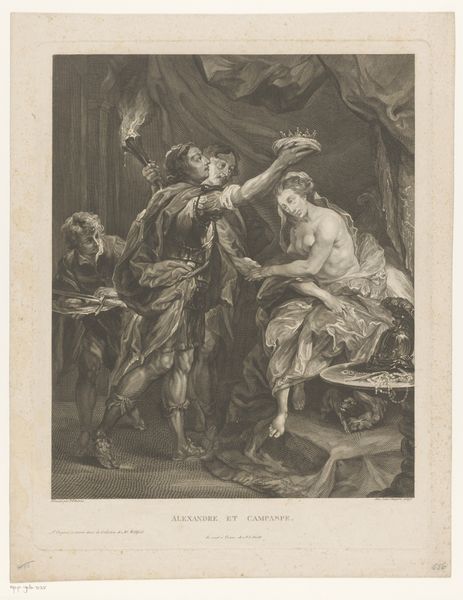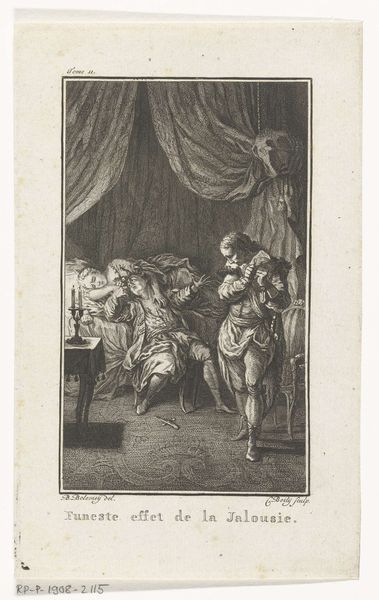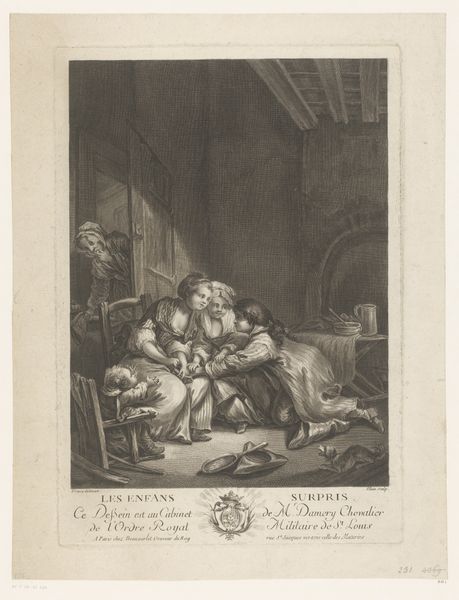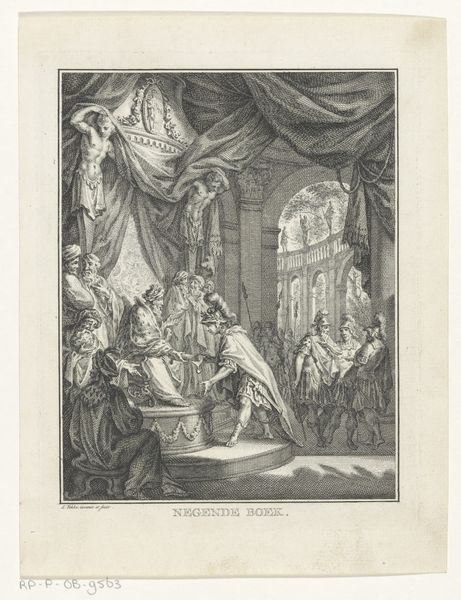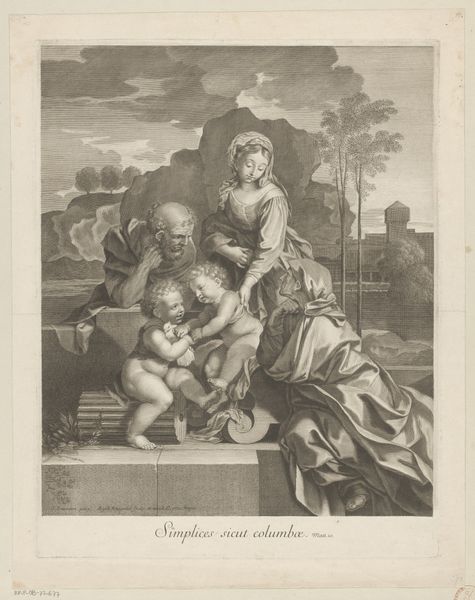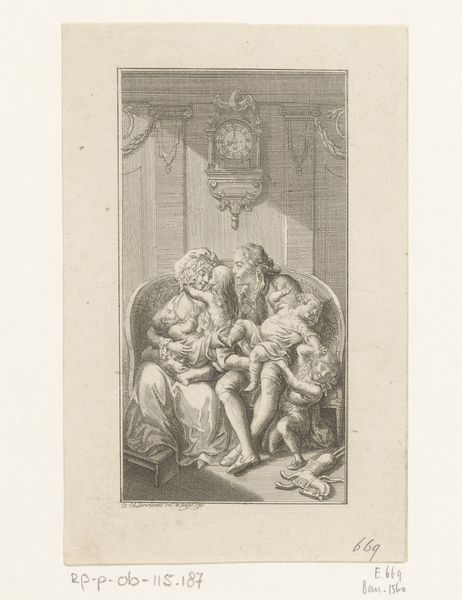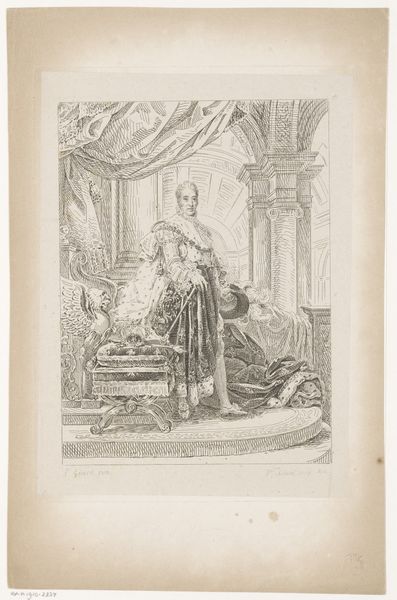
print, engraving
#
allegory
#
narrative-art
#
baroque
# print
#
figuration
#
line
#
history-painting
#
engraving
Dimensions: height 354 mm, width 218 mm
Copyright: Rijks Museum: Open Domain
Curator: Right, let's spend some time with this detailed engraving, "The Dream of Nebuchadnezzar," dating back to 1711 by Quiryn Fonbonne. It is currently housed here at the Rijksmuseum. What strikes you first? Editor: The weight of it all. Even in this meticulously lined engraving, there’s a profound sense of heaviness, from the drapery to the king’s slumber, it feels like history is bearing down. Curator: Indeed! Fonbonne, working in that high baroque style, is rendering a specific moment from the Book of Daniel. Nebuchadnezzar, the Babylonian king, is troubled by a dream, a prophetic vision. It’s not just a narrative piece but also quite allegorical. Editor: The composition certainly underscores the allegory. You've got Nebuchadnezzar in the upper right looking rather vexed on his ornate bed, seemingly caught between realms. Then this colossal statue—it’s fragmented, but definitely imposing. Curator: The statue represents successive kingdoms, each made of different metals: gold, silver, bronze, iron, and finally, clay mixed with iron. That final mixture symbolizes the fragility and ultimate downfall of future empires. See the scholars huddled together at the bottom of the composition struggling to decode the prophetic dream. Editor: Ah, I see, the precarious nature of power itself rendered through material contrast. It reminds me that even grandeur crumbles and is a visual comment about instability. Curator: Absolutely. Notice also how Fonbonne’s confident handling of the lines conveys this. There’s a very sharp contrast, very few shades of gray, conveying the absolute conviction that prophecy always occurs. It makes you wonder how belief systems impacted artistry in those times. Editor: And just imagine viewing this print as an Enlightenment person coming to grips with new political systems. An engraving such as this then prompts conversations about interpreting history, which remains timeless. Curator: Precisely, whether you appreciate the artistic skill or are interested in how artists visualized these Biblical moments, the enduring legacy lies in these stories prompting thoughtful questions.
Comments
No comments
Be the first to comment and join the conversation on the ultimate creative platform.

